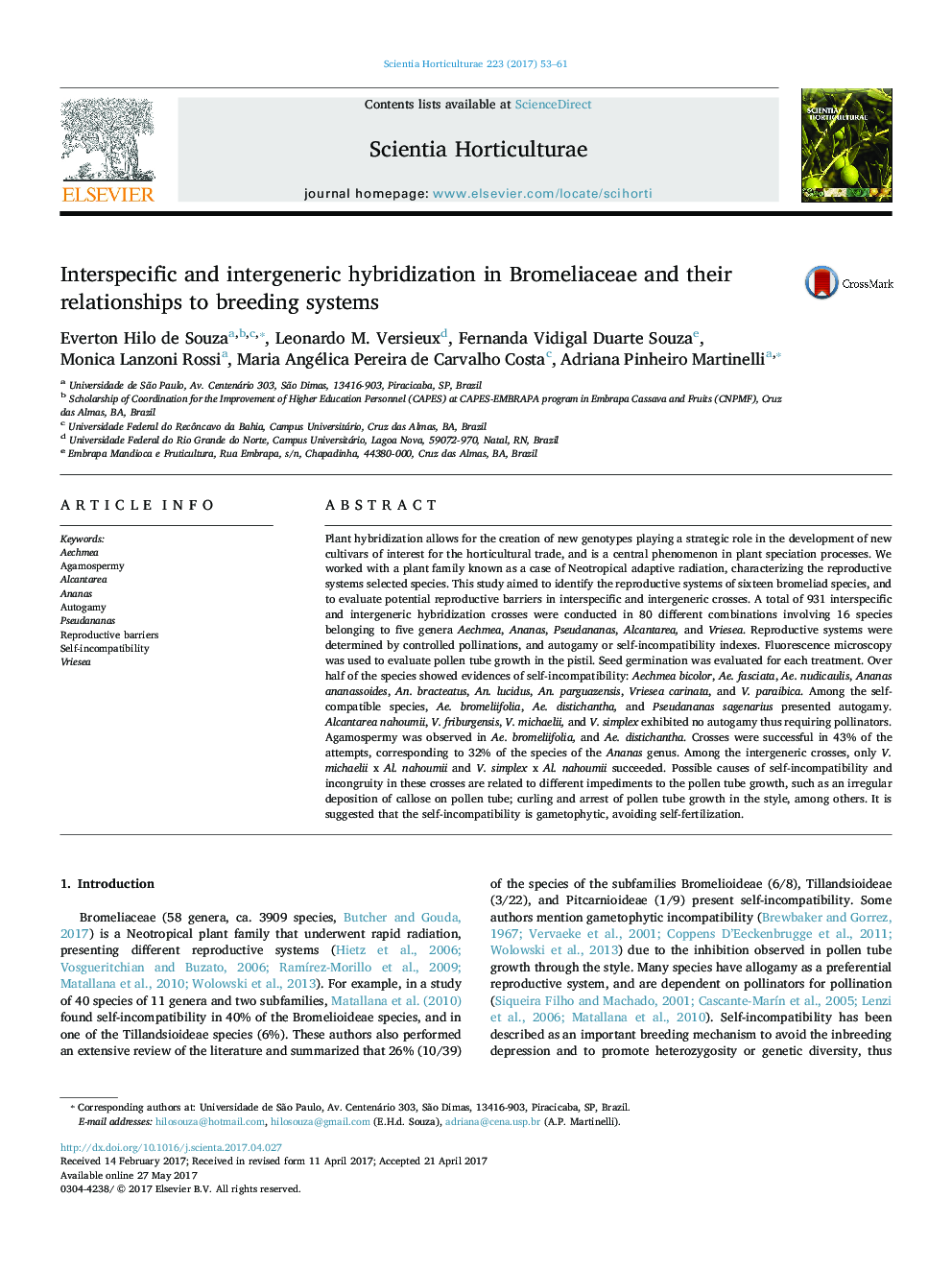| Article ID | Journal | Published Year | Pages | File Type |
|---|---|---|---|---|
| 5769662 | Scientia Horticulturae | 2017 | 9 Pages |
â¢Different reproductive mechanisms were observed in different species of Bromeliaceae.â¢Successful interspecific and intergenic hybridizations were obtained in Bromeliaceae.â¢Regions of self-incompatibility and incongruity in the pistil were detected by fluorescence analysis.â¢The data obtained will help guide efforts to develop attractive ornamental hybrids.
Plant hybridization allows for the creation of new genotypes playing a strategic role in the development of new cultivars of interest for the horticultural trade, and is a central phenomenon in plant speciation processes. We worked with a plant family known as a case of Neotropical adaptive radiation, characterizing the reproductive systems selected species. This study aimed to identify the reproductive systems of sixteen bromeliad species, and to evaluate potential reproductive barriers in interspecific and intergeneric crosses. A total of 931 interspecific and intergeneric hybridization crosses were conducted in 80 different combinations involving 16 species belonging to five genera Aechmea, Ananas, Pseudananas, Alcantarea, and Vriesea. Reproductive systems were determined by controlled pollinations, and autogamy or self-incompatibility indexes. Fluorescence microscopy was used to evaluate pollen tube growth in the pistil. Seed germination was evaluated for each treatment. Over half of the species showed evidences of self-incompatibility: Aechmea bicolor, Ae. fasciata, Ae. nudicaulis, Ananas ananassoides, An. bracteatus, An. lucidus, An. parguazensis, Vriesea carinata, and V. paraibica. Among the self-compatible species, Ae. bromeliifolia, Ae. distichantha, and Pseudananas sagenarius presented autogamy. Alcantarea nahoumii, V. friburgensis, V. michaelii, and V. simplex exhibited no autogamy thus requiring pollinators. Agamospermy was observed in Ae. bromeliifolia, and Ae. distichantha. Crosses were successful in 43% of the attempts, corresponding to 32% of the species of the Ananas genus. Among the intergeneric crosses, only V. michaelii x Al. nahoumii and V. simplex x Al. nahoumii succeeded. Possible causes of self-incompatibility and incongruity in these crosses are related to different impediments to the pollen tube growth, such as an irregular deposition of callose on pollen tube; curling and arrest of pollen tube growth in the style, among others. It is suggested that the self-incompatibility is gametophytic, avoiding self-fertilization.
